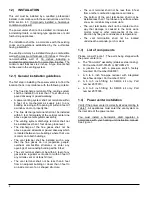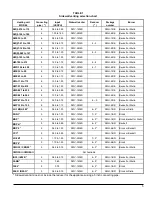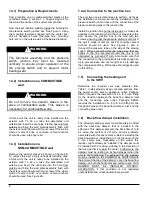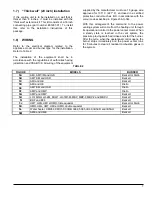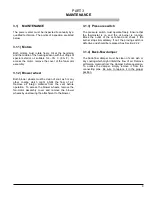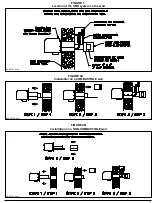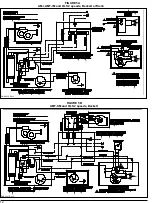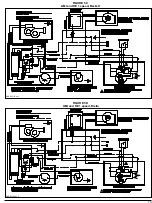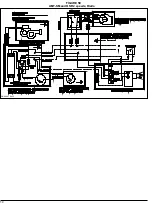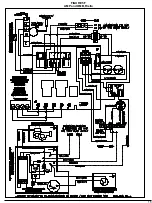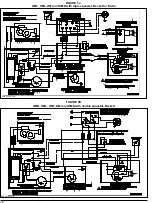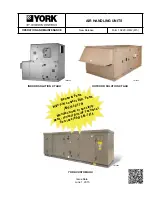
8
PART 2
OPERATION
2.1)
START-UP & ADJUSTMENTS
For the start-up of your heating unit, please refer to the
instruction manual supplied with it. The start-up of a
system using a power venter is exactly the same as a
system without a power venter. The power venter is
merely replacing a chimney.
2.1.1) Draft adjustment
The power venting system shall be adjusted by reading
the flue draft upstream of the draft regulator and
adjusting this regulator with the draft setting specified
below. These specifications correspond to the heating
unit instruction manuals.
TABLE 3
Draft adjustment
Heating unit model
Draft (" W.C.)
AME, HME, AM(i), AM(i)T, AMP, OLS,
OSR, OMP, HMT, HML and HM(i)-
1.35 USGPH and less
-0.035
HMD and HM(i)-1.50 USGPH and
more
-0.050
LO-1MQH, LO-1M3M, FBR-1, MBP-U,
CCC, MBP, BRF, CMO32, CMO50,
30RB, 32E2, 50E2, IB-30, IB32-R and
IB50-O
-0.020
LO-2M, BFF, MBP-2 and MBP-F
-0.040
2.2)
VERIFICATIONS AND TESTS AFTER
START-UP
The following tests must be performed after the start-
up to ensure safe, reliable and trouble free operation.
2.2.1) Ignition test
The installer must verify if the ignition of the burner is
smooth when the heating unit operation is interrupted
by means of the thermostat, limit control or the power
venter proving switch. If the ignition is not smooth, the
burner should be readjusted as discussed earlier.
2.2.2) Proving switch test
This test must be performed to verify the normal
operation of the venting system proving switch. Block
the discharge of the power venter while the unit is
operating. Once the discharge is completely blocked,
the unit must stop. After removal of the blockage, the
unit must ignite smoothly. Should the proving switch
not work properly, you must change it. This proving
switch is not field adjustable and must be replaced
when working improperly.
2.2.3) Post-purge delay test
To test, simply let the unit run for a minimum of 5
seconds and then stop the cycle. The burner should
stop but the power venter should continue to operate
for another 5 minutes.
2.2.4) Back-flow damper interlock
switch test
Using a pair of pliers, hold the shaft of the damper in
place so the damper is blocked in the closed position.
Then, try to start the burner. The burner should not
come on until the damper is released from its
completely closed position.




